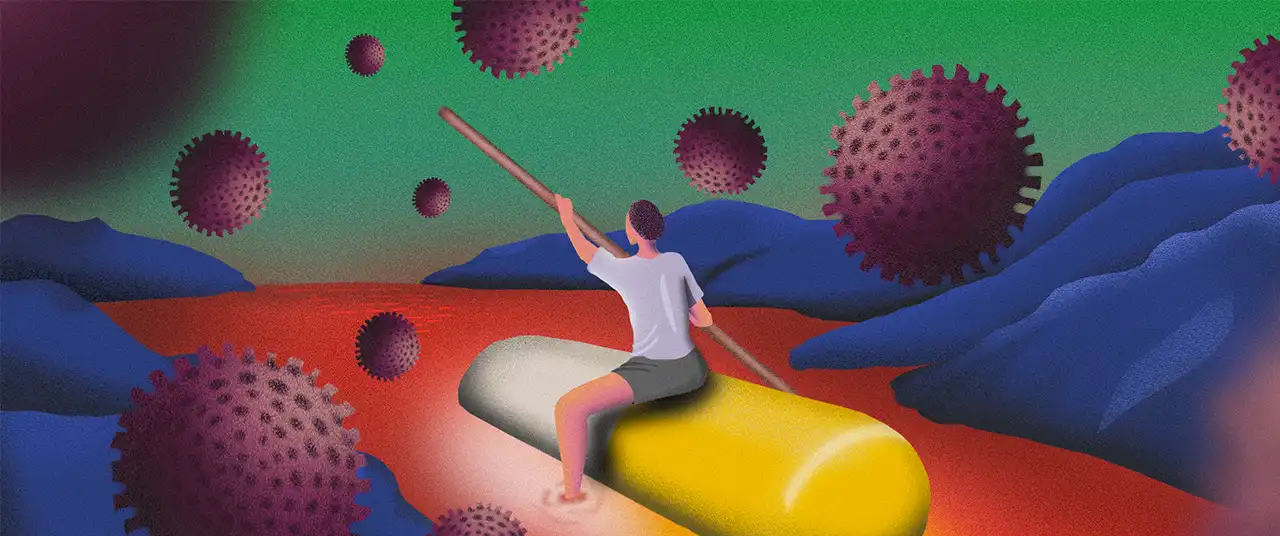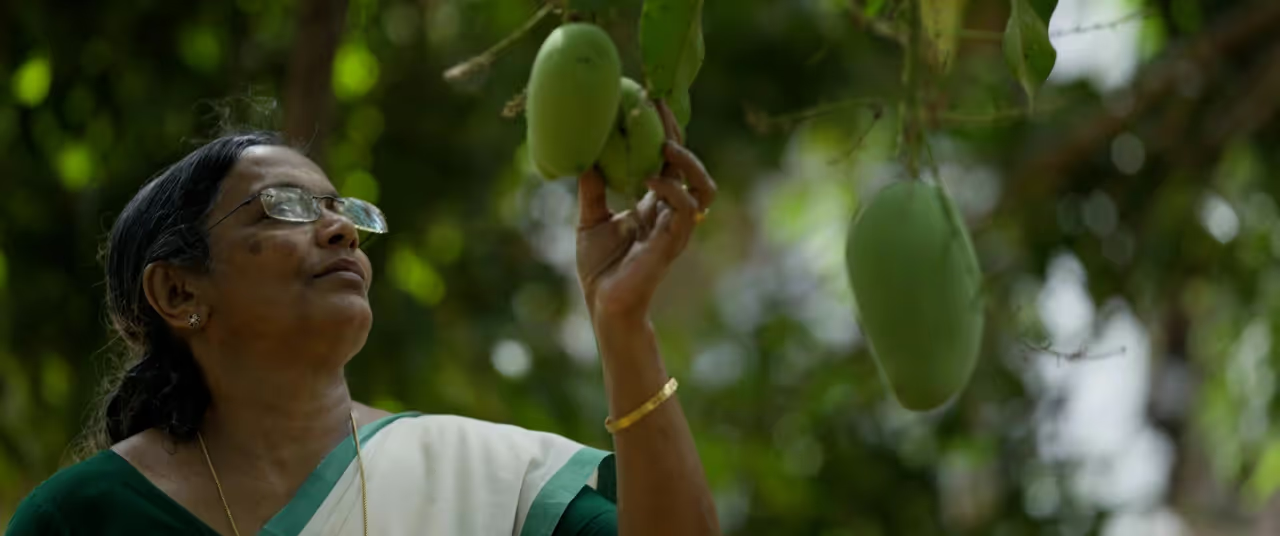'Farm owners are unaware of antimicrobial resistance's risks'






In 2019, the leading international research journal Science reported a rise in antimicrobial resistance (AMR) in central India. Two years later, the research platform Nature Communications identified wetlands in Kerala as emerging AMR hotspots. However, both studies were based on meta-analyses (a process that compares data from independent studies to draw broad conclusions) or indirect data. Researchers were left puzzled: there really wasn’t enough comprehensive ground-level data to validate these conclusions.
This gap in data motivated a team from the Drug Safety Division of the Indian Council of Medical Research (ICMR) – National Institute of Nutrition in Hyderabad, led by Dr Shobi Veleri, to investigate the prevalence of AMR in poultry.

In 2022, the team launched a study focusing on two states: Telangana and Kerala. The recently published research report revealed that the antimicrobial resistance profile in poultry in central and southern India is evolving with distinct features, thus validating the reports published by the international journals.
However, it stated that the severity of AMR profiles in the samples was relatively lesser than those seen in the poultry from the European Union (EU). AMR profiles from the Indian states have not evolved to the extent seen in poultry farms of the European Union (EU). “This suggests that India still has an opportunity to contain the AMR in poultry by putting in place stringent regulations,” says Dr Veleri, in an exclusive interview with GFM.
He also cautions that many farm owners are unaware of the risks of AMR. “Inadequate regulatory supervision contributes to the indiscriminate use of antibiotics. Overcrowding in farms and inadequate biosecurity protocols allow resistant bacterial strains to spread quickly in poultry populations.”
Edited excerpts from the interview:
How did you go about conducting the research?
We collected fresh, warm stool samples from poultry farms in Telangana during July and August 2022, and from Kerala during September and October 2022. Three samples were collected from each farm, separated by at least 3 km. We took a total of 240 faecal samples from 85 poultry farms. As many as 38 of them were located in Telangana, while the remaining 47 were from Kerala. Adhering to the international practice of masking the identity of individual farms, the samples were pooled zone wise. Kerala had three zones: north, middle and south. Telangana had three major mandals surrounding the Hyderabad metropolitan area, which has a large congregation of poultry farms. From the stool, genomic DNA was isolated and genome sequencing was done on an advanced automatic sequencing machine. The output data was analysed by a computer-based programme to avoid human interference.
The study was done by a four-member team from the Drug Safety Division of the ICMR - National Institute of Nutrition from Hyderabad, led by me. Ajmal Aseem, Prarthi Sagar, and N Samyuktha Kumar Reddy were the other members in the team.

What were your major findings from this process?
We identified over 169 distinct AMR genes from the samples. This included high priority pathogens such as E.coli, Enterococcus faecalis, Klebsiella pneumonia, Salmonella typhimurium, Staphylococcus aureus, Pseudomonas aeruginosa, which cause abdominal infections, respiratory tract infections (pneumonia, bronchitis), and urinary tract infections. Notably, southern India exhibited a significantly higher number of resistance genes, compared to central India.
What explains this prevalence of AMR genes in poultry?
All organisms have strong survival instincts. Bacteria, too, have an incredibly fast system to develop resistance against antibiotics that threaten their existence. The more the use of antibiotics, the more chances the bacteria will have to evolve resistance genes.
Antibiotics are used indiscriminately in poultry farms because of the inadequate regulatory supervision. We realised that many farm owners are unaware of the risks of AMR. What compounds the problem is the overcrowding in farms and inadequate biosecurity protocols, which allow resistant bacterial strains to spread quickly in the poultry population.
Environmental factors, too, play a crucial role. Improper disposal of animal waste often leads to the contamination of water sources, which introduces AMR bacteria into the food chain. The proximity of poultry farms to human settlements increases the risk of contact transmission.
How can AMR bacteria spread to humans and the extended environment?
Like most infectious diseases, AMR bacteria can spread through contact: animals to humans and humans to humans. AMR bacteria can also enter the environment through the faeces of humans or animals. A common route for bacterial contamination of the food chain is from faeces via soil to water–and ultimately, the bacteria reaches animals and humans.
Properly cooked food and meat generally degrade 95% of the contaminated bacteria and the DNA in them, except some spore-forming ones. So, avoiding chicken meat is not a solution against the threat of AMR.
The best option is to reduce indiscriminate use of antibiotics.
Also read: The looming crisis of post-antibiotic era
Your study mentions that “the samples exhibited a higher prevalence of gram-negative and anaerobic species”. What does this mean?
Our samples had 44% gram-negative, such as E.coli, Bacteriodes fragiles, Klebsiella pneumonia, Pseudomonas aeruginosa; and 79% of species were anaerobic, such as Clostridium perfringens, Enterococcus faecium, Staphylococcus aureus. Gram-negative bacteria have an extra layer of cell membrane protection: it’s almost like a helmet which protects your head during bike rides. These gram-negatives, upon acquiring AMR genes, get double protection against antibiotics–making it very difficult to kill them via antibiotics. If they evolve to overcome treatment options, we will be facing a serious health hazard.

The study states that “the severity of AMR in Telangana and Kerala is lesser than European Union.” Does this mean that it’s safer to consume chicken meat in India than in the EU?
We inferred that the severity of AMR profiles in the samples was relatively lesser than those seen in the poultry from the European Union (EU). This is because we could not detect the recently-evolved AMR gene mcr-1, which is resistant to Colistin (a last-resort antibiotic on the World Health Organization’s essential list of medicines to treat AMR) and another newly-evolved resistance gene optrA in our samples. These genes are commonly found in AMR-affected poultry in the EU.
Additionally, the qnr gene, commonly found in the EU, was found at much lower levels in Southern Indian samples. So, AMR profiles from Kerala and Telangana poultry farms have not evolved to the extent seen in poultry farms in the EU. This might be because Indian farmers started using antibiotics much later than their counterparts in the EU. This suggests that India still has an opportunity to contain AMR by putting in place stringent regulations.
How serious is the situation?
AMR is an emerging global threat to the healthcare sector because [if this continues] we will run out of effective antibiotics to treat diseases in humans and animals. The World Health Organization has considered AMR among the top priority in its ‘Sustainable Development Goals’ under the ‘One Health’ practices and principles. The data indicates that AMR genes are in an alarming condition, at least in some regional hotspots in poultry farms. If we miss this opportunity to control its spread, we will be in for a huge health crisis. The findings underscore the urgent need for reducing indiscriminate use of antibiotics through proper stewardship, enhanced biosecurity monitoring measures–and targeted public health interventions to mitigate the growing threat of AMR in poultry as well as its spillage to other organisms.
Also read: What’s lurking in your chicken dinner?
Is it possible to completely avoid the use of antibiotics in the poultry industry?
While it is challenging to completely avoid the use of antibiotics in the poultry industry or any sector for that matter, it is possible to significantly reduce our reliance on them through improved hygienic animal husbandry practices. It is time the poultry industry utilised alternatives to antibiotics, such as vaccines, peptides, and bacteriophages, etc.
Also read: How bacteria evolve and survive antibiotics
{{quiz}}
Explore other topics
References




.avif)

.avif)




